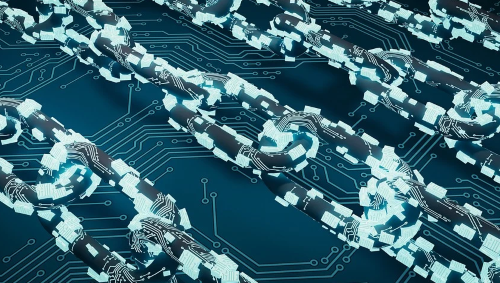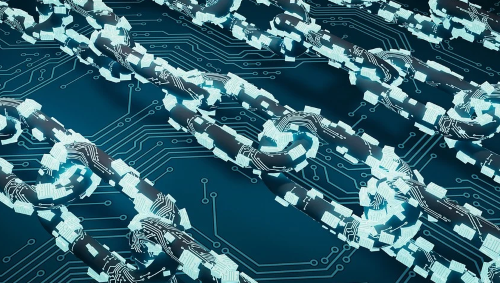


EY Takes Crack At Ethereum’s Gas Fee Problem With New Protocol
Why Terra (LUNA) Will Reward Users With New Community Bounty Program
Before the crash in the crypto market, Terra (LUNA) saw one of the strongest rallies of 2021. This platform’s native token traded under $1 early in the year and reached an all-time high of $22 before dropping to its current price at $5,88. The rally translates into a 2,691% profit in one year.
Its ecosystem has been growing equally fast. Therefore, the protocol has decided to launch Terra’s Community Bounty Program. The official announcement claims the following:
Terra’s ecosystem is flourishing. Third-party projects are popping up seemingly every day & opportunities for community members to contribute to the growth of TeFi are abundant. Read More
This Is How DAOs Are Taking A Greater Role in the DeFi and NFT Sectors
Decentralized autonomous organizations (DAOs) have been operating under the radar for a while now. Amid all the excitement over bull markets, DeFi and NFTs, DAOs have found themselves being neglected, despite the fact that they’re coming to play an increasing role within the crypto ecosystem.
From DeFi protocols such as Uniswap (UNI) and Maker (MKR) to NFT platforms such as YellowHeart and JennyDAO, decentralized autonomous organizations are turning up almost everywhere you look in crypto. And while they haven’t received much attention so far this year, new and emerging DAOs are managing to attract millions in investment, while DAOs themselves are becoming more complex in how they operate and manage themselves. Read More
How Does Markethive Create Token Velocity?
.png)
A token that is only a medium of exchange has a very strong chance of falling victim to price manipulation. Alternatively, Markethive has in place, numerous velocity stabilizers including staking, (The Vault), network utility expansion, and the fact it is a cryptocurrency coin, will keep the balance of velocity. This ensures that the velocity is maintained for the initial and long-term price of MHV and is indicative of a healthy Markethive Ecosystem. A strong economy will in turn sustainably increase MHV’s price.
Coins or Tokens that are structured to capture a significant portion of the economic value generated by the network will reward both the investors who took on early-stage risk as well as the platform who can continue to fund development through the retention of now valuable tokens.
There is a huge market looking for what Markethive does. Read More
BlueBarricade achieves new performance levels for high-speed enterprise blockchain
The blockchain accelerator – developed on IBM Blockchain Platform by Sweden-based software house BlueBarricade Blockchain & AI Technology AB – has achieved new performance levels in the global market for high-speed enterprise blockchain. Performance tests have been conducted with the support of HCL and IBM.
“We are excited to bring forth our ground-breaking efforts that show a consistent result of 1,400 blockchain transactions per second on the BlueBarricade blockchain accelerator,” says Mikael Bramstedt, innovator and founder of BlueBarricade Blockchain & AI Technology AB. Read More
Credential-focused blockchain is moving mainnet to proof-of-stake
A blockchain project that enables decentralized identities and verifiable credentials to be created has announced that it is transitioning to a proof-of-stake algorithm.
Dock says the switch to PoS will further decentralize its network — increasing the number of validators involved in securing its infrastructure and enhancing governance measures.
Until now, the project’s blockchain has been based on a proof-of-authority algorithm, where validators were selected by the Dock Association, a nonprofit organization.
The move to PoS means that validators will now be chosen by the network based on how many Dock tokens have been locked up to back their candidacy. Candidates will be able to stake their own tokens, and other token holders will also be able to support their nomination. They will subsequently be rewarded if the candidate is selected to start producing blocks. Read More
NFTs make it possible for gamers to have digital property rights
The digital ownership conferred by blockchain will allow the Metaverse to fulfill its true potential as community-owned and community-governed.
Until now, players hadn’t thought very deeply about digital rights, but thanks to the growing number of blockchain games, there will soon be a revolution wherein gamers will start to demand their property rights.
We already have the means for digital property rights in games: nonfungible tokens (NFTs) as in-game assets. Enabled by blockchains, NFTs are unique, indivisible tokens that grant owners property rights and enable digital assets to have real value, independent of the platform. The platform could be a game, a publisher, a mobile app store, or other exclusive hosts, but gaming is probably the best starting point because the 2.7 billion gamers out there already understand the concept of virtual goods.
Digital ownership rights on a blockchain are provided by open permissionless protocols and guaranteed by the collective reckoning of community consensus. This allows NFT game assets to be traded between holders in a way that is unthinkable in most traditional games.
This is great for gamers, but many traditional game publishers fear that this new dynamic will have a negative impact on their profits. Read More
Disclaimer: These articles are provided for informational purposes only. They are not offered or intended to be used as legal, tax, investment, financial, or other advice.
